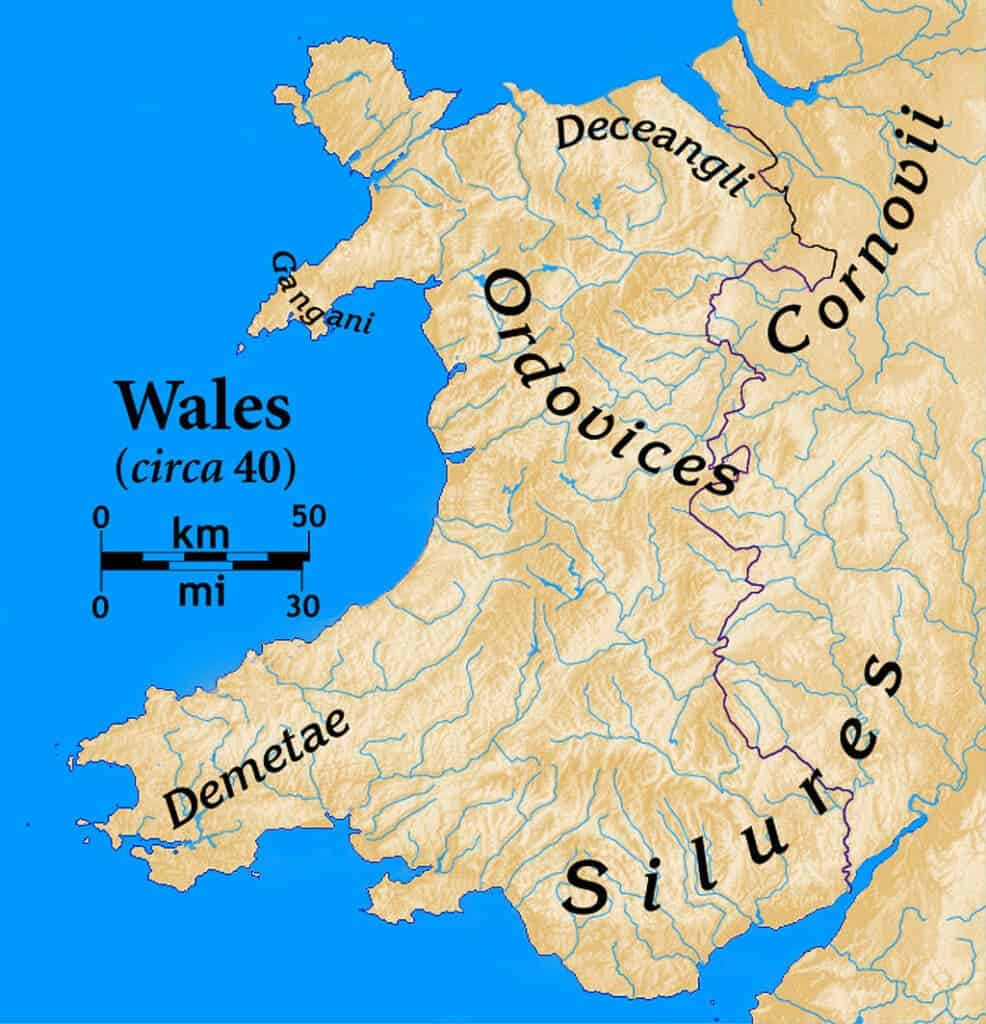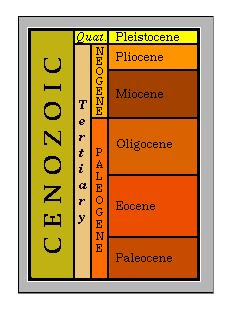We’ve all heard of Jurassic Park, but do you know where the Jurassic in Jurassic Park comes from? All the geological eons and ages are named after something, and today, we’ll take a look at those names and what they were inspired by.
Before we dive into things, let’s take a moment to look at who names geological periods and why. That responsibility rests with the International Commission on Stratigraphy, itself a body of the International Union of Geological Sciences. Geological time periods are named because, well, geologists need something to refer to — something better than “that time 50-100 million years ago.”
The eon is the largest time unit, and there are only four eons currently defined. Below the eon, lies the era — ten eras are currently defined as an eon. After that, we have the epoch and the age, being subsequent subdivisions. Approximately speaking, they last for:
| Geochronologic unit (time) | Time span |
|---|---|
| Eon | Several hundred millions of years |
| Era | Tens to hundreds of millions of years |
| Period | Millions of years to tens of millions of years |
| Epoch | Hundreds of thousands of years to tens of millions of years |
| Subepoch | Thousands of years to millions of years |
| Age | Thousands of years to millions of years |
However, geological time isn’t just named in fixed units, but rather by events or some context that defines them. Essentially, geological periods reflect the definitory natural patterns of the Earth. The limit separating two geological periods is often an extinction or some dramatic event that marked a major transition. We won’t look into the sub-sub divisions, only at the large time periods and what defined them.
The first ages
Compared to human history, the Earth is old; really, really, old. Long before dinosaurs even emerged, or even before the first macroscopic life emerged, the Earth was already old. So a period like the Jurassic, for instance, which lasted some 55 million years, is just a blip in the planet’s history; a significant blip, but a blip nonetheless.
In fact, three of the largest periods are some we rarely even talk about: the Hadean, the Archean, and the Proterozoic.

The three are grouped under an informal term called the Precambrian — we’ll get to the Cambrian in a moment and explain why it’s such a big deal that earlier periods have to be referred to relative to it. But for now, suffice it to know that the Precambrian happened before the Cambrian, and geologists refer to it when they just want to say “something so old that it happened before the Cambrian”, and not go into more details.
Three of the four geological eons are in the Precambrian. These are:
The Hadean — named after the ancient Greek God Hades, kind of the underworld. The first eon after the Earth formed was indeed hellish. The planet hadn’t yet cooled down, there was no atmosphere, and volcanic eruptions and meteorite impacts made the early Earth a very unfriendly place.
The Archean — literally means “the old” in Greek. At this time, the Earth’s crust had cooled down, but there was still no free oxygen in the atmosphere. Life was simple in the Archean: microbial mats and other simple, single-celled life forms.
The Proterozoic — means “the life before”, or the “earlier life.” There was a time when researchers thought life emerged during the Proterozoic, but now we’ve found evidence of life from the Archean, or possibly even the late Hadean.
The Phanerozoic — the current geologic eon means “visible life,” a term coined in 1930 by the American geologist George Halcott Chadwick. Yes, there was also a time when researchers also thought life only emerged in the Phanerozoic, but now we know better.
The classics
The Phanerozoic dates from 538.8 million years ago to the present. If you’ve ever heard of a geologic period, the odds are it’s something from the Phanerozoic, and most of the interesting geological stuff (at least that we know of) happened in this eon.

The Phanerozoic is split into three eras: the Paleozoic (old life), the Mesozoic (middle life), and the Cenozoic (new life). Their subdivisions, the geological periods, are the ones you’re most likely to be familiar with (or most likely to come across when reading things related to geology or paleontology).
Paleozoic periods name origin
Cambrian — the first geological period of the Paleozoic was named after Cambria, the Latinized name for ‘Cymru’, or Wales as we know it today. The period was first described after rocks discovered in Wales, hence the name. In the Cambrian, life exploded in a yet-unparalleled way, with organisms emerging to fill every environmental niche. The Cambrian was also unique in its abundance of sedimentary deposits suitable for fossil conservation, which is why we know so much about it although it took place so long ago. The first plants and arachnids emerged in the Cambrian.
Ordovician — was named by the famous British geologist Charles Lapworth in 1879 after a Welsh tribe called Ordovices. Yes, as you’ll soon notice, several geological periods are named after things in Britain, because that’s where much of the early geological research took place. The Ordovices were a Celtic tribe subdued by the Romans in the first century of our Era. The early Ordovician climate was very hot, with intense greenhouse conditions, but also regular intense glaciations; yet life continued to thrive and diversify. The first fungi emerged in this period.
Silurian — was named after (deja vu?) the Welsh tribe of Silures. The warlike tribal group bordered the Ordovices to the south. Basically, researchers described the Silurian based on rocks found in the ancient area inhabited by the Silures. During this period, the Earth entered a long, warm greenhouse phase. Our first land plant fossils date from this period. The first bony fishes also emerged during the Silurian.

The Devonian — we’re finally out of Wales, because the Devonian was named after… rocks found in Devon, England. Not everything is named after British things, I promise. The Devonian is also known as “the age of fishes” because that’s when fish truly started diversifying. The first ammonites, iconic (but extinct) marine mollusks also appeared during or slightly before the early Devonian Period.
Carboniferous — finally, something non-British! The Carboniferous means “coal-bearing” — think ‘carbon’, coal has a lot of carbon. During the carboniferous, large trees started emerging. But here’s the thing: the fungi and microorganisms had not yet evolved the enzymes that could digest the newly-formed trees. So during the Carboniferous, large tree deposits were left in place and eventually turned into coal. In order to do the same thing today, you’d need very specific conditions, so it’s unlikely for any new major coal deposits to be formed now.
Permian — we’re back to more geographical locations, but it’s no longer the UK, but Russia. The Permian, the last stage of the Paleozoic, was named after the city of Perm, in Russia, where the first Permian rocks were described thoroughly. The first ancestors of reptiles and mammals first emerged during this period.
After the Permian, we’re off to the Mesozoic — but not quite yet. Remember how we said that geological periods are often marked by cataclysmic events? The end of the Permian was probably the worst mass extinction in our planet’s history. It took 30 million years for life on land to recover, and around three quarters of all life forms went extinct.
Mesozoic periods name origin
Triassic — whenever German geologist Friedrich August von Alberti would study rocks from what we now call the Triassic (in 1834), he would find three layers in succession: a colorful sandstone, a shell-bearing limestone, and colored clay. So he called it the Triassic, after the three layers. A specialized subgroup of reptiles, called dinosaurs, would emerge in this period, but they wouldn’t become dominant until the next period.
Jurassic — dear reader, welcome to Jurassic… time. The Jurassic, the first age when dinosaurs dominated the Earth’s ecosystems, was named after the Jura Mountains in Poland, where limestone strata from the period were first identified. All the way back in 1795, German naturalist Alexander von Humboldt recognized that the Jurassic is a distinct age from the Triassic (which had not been yet named). A lot of things happened besides the dinosaurs: conifers became dominant, turtles diversified, and birds also emerged as a type of dinosaur.
Cretaceous — While several previous periods came from Greek, this one comes from Latin. The Cretaceous was named for the extensive beds of chalk (calcium carbonate deposited by the shells of marine invertebrates) found in Western Europe. The name Cretaceous was derived from Latin creta, meaning chalk. During the Cretaceous, dinosaurs truly became dominant and ruled the planet with an iron claw. But their reign was brought to an end by a meteorite that smashed into the planet, bringing along the end of the Cretaceous as well as the Mesozoic.
Cenozoic periods name origin

The Cenozoic, as the newest period, is also the one we have the most information on. It’s also a bit more volatile. Until 2004, we would have said that the Cenozoic is split into the Tertiary and the Quaternary — the third and the fourth, respectively. But in 2004, the Tertiary Period was officially replaced by the Paleogene and Neogene Periods — which mean “ancient born” and “new born”.
Paleogene is Greek meaning “ancient-born.” It includes the Paleocene (Palaeocene) which started 66 million years ago, when the dinosaurs went extinct, the Eocene (derived from the Greek eos, for “dawn”, as it was the dawn of many creatures that are important today), and the Oligocene (Oligo=few; cene=recent, because very few recent fossils are found in sediments from this period).
We’ll do something we haven’t done for the other periods (a bit of recency bias, if you will) and zoom in a bit more on Neogene periods and the Quaternary. The Neogene is itself split into the Miocene and Pliocene.
Miocene — named by Scottish geologist Charles Lyell, with its name coming from two greek words that mean “less new”. Because you know, it’s a new period, but not quite as new as the Pliocene.
Pliocene — it’s also Charles Lyell who gets the honor of naming this period, which means (you’ve guessed it) “more new”.
Even more recently, we have the Quaternary, which contains two stages:
Pleistocene — lasting from 2,580,000 to 11,700 years ago, this period means “the most new”. I know, geologists really dropped the ball on this one.
Holocene — this period is extremely short compared to the previous, lasting only in the past 11,700 years ago, starting after the last Glacial Period. Holocene literally means “completely new.”
A new kid on the block?
So that’s it, we’re living in the Holocene, right?
Well, depends who you ask. A lot of geologists are saying humans have affected the planet so much (through things like climate change, nuclear bombs, and pollution) that we’ve ushered in a new geologic age: the Anthropocene. This one is named after us — anthropos means ‘human’, and ‘cene’, as you may have pieced together by now, means ‘new’. So we have a new human age, but that’s not something to be happy about. The fact that we’re changing the planet so much we’re causing a new geologic age should give us a lot of food for thought.


